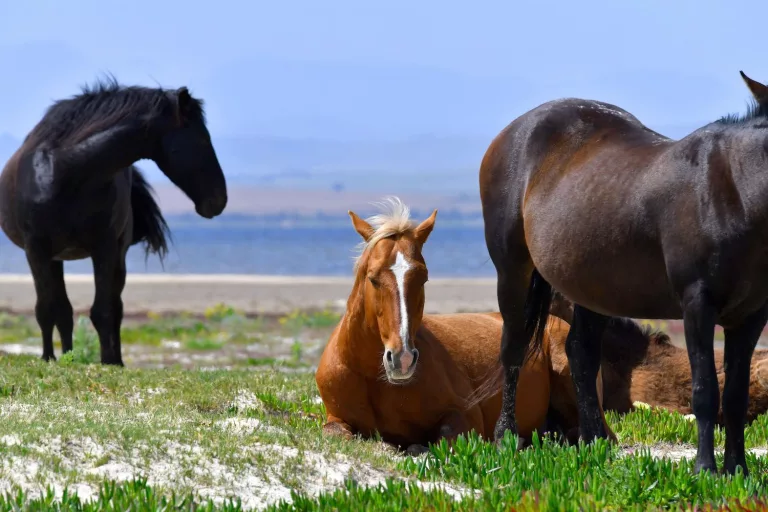[ad_1]
South Africa is home to insane sunsets, wildlife, blue flag beaches, spectacular mountain ranges, and delicious gastronomic experiences. One thing that doesn’t come to mind when considering the Rainbow Nation is wild horses. However, we have those too.
Either travel down to the Overberg to visit the equines, which base themselves in the Rooisand wetlands, or head north to see them roaming around the quaint town of Kaapsehoop.
Rooisand Wild Horses
For as long as anyone in the area can remember, wild horses have been between the Rooisand Reserve parking lot and the Kleinmond river mouth. Interestingly, they live in the wetland and rarely venture out, except during lockdown when they visited the empty beaches.

There are many theories about how the horses arrived in the wetland. One such idea is that they are descendants of the horses that were hidden from the British Army during the Anglo-Boer War between 1899 and 1902. Another theory is that they survived a massive cull when early Dutch settlers decided the role of horses on farms was redundant.
A third rumour is that a ship called The Birkenhead sank off Gansbaai’s coast in 1852, and eight cavalry horses swam ashore. The wild horses of today could be the descendants of those eight survivors.
Observers say that these horses are physically adapted to live in the wetland, growing out thick winter coats in the colder months, and have saucer-shaped hooves to maneuver through their wet living conditions.

Environmentalists also believe these horses are important to the area’s ecosystem. They prevent waterways from clogging with their footpaths and eat various edible plant species.
You can visit the Rooisand Nature Reserve to have a look at these wetland wild horses.
Kaapsehoop Wild Horses
The wild horses of Kaapsehoop are just as much a mystery as the Rooisand ones, with no concrete story of how they arrived.

Some say the horses have been around for as long as 100 years, being left behind after the end of the Anglo-Boer War.
The town grew to 5000 people when the precious metal was found in 1882 and then dwindled down to 16 people when no more could be dug up. Nowadays, some people theorise that the horses were left behind after Kaapsehoop’s short-lived gold rush.

Pictures: Jordyn Johnson
Another theory is that the horses haven’t been around as long as some believe, and were used on the plantations surrounding the town in the 1960s and then left behind.
The chances of seeing herds of these locally protected wild horses are high as they wander through the town, over the hiking trails, and sometimes cross the road as you’re driving (slowly, I hope).

Pictures: Jordyn Johnson
Pictures: Alamy
Follow us on social media for more travel news, inspiration, and guides. You can also tag us to be featured.
TikTok | Instagram | Facebook | Twitter
ALSO READ: Spend 48 hours exploring Kaapschehoop, Mpumalanga
[ad_2]
Source link




















